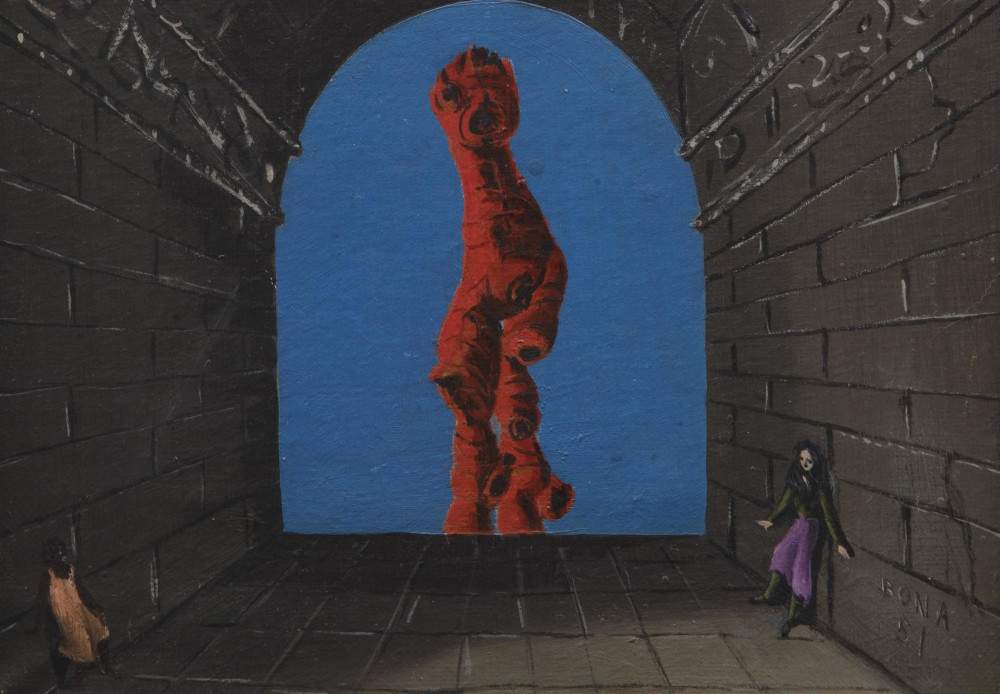At the Nivola Museum the first major retrospective of the surrealist Bona de Mandiargues
The Nivola Museum in Orani (Nuoro) presents from Sept. 16, 2023 to Feb. 5, 2024 the first major retrospective of surrealist artist Bona de Mandiargues, curated by Giuliana Altea, Antonella Camarda, Luca Cheri, and Caterina Ghisu. An artist and writer, her singular story, never previously reconstructed, makes her, along with Leonora Carrington, Meret Oppenheim, Dorothea Tanning, Dora Maar or Remedios Varo, one of the protagonists of the panorama of a “feminine” surrealism today at the center of attention of critics and the public. Her work stems from a search for self that finds in the themes of metamorphosis, animal totemism and the fantastic the means to express a divided and fragmented identity. Fascinating and much admired, Bona identified herself, however, at least since the 1970s, with the snail, a hermaphroditic animal and ambivalent figure, the embodiment of surrealist formlessness. For the artist, the snail is a symbol of the androgynous, of fragility and strength, and of his restless mind.
Entitled Bona de Mandiargues. Reworking the World, the exhibition, based on extensive archival research, aims to reconstruct Bona de Mandiargues’ itinerary through seventy-one works from between 1950 and 1997, from the collection of the artist’s heirs and from private and public collections, including the Intesa San Paolo Foundation, the National Gallery of Modern Art in Rome, and the Ferrara Galleries of Modern and Contemporary Art.
The exhibition opens with precious paintings that mark the artist’s rapprochement with Surrealist imagery, then continues with the fiery landscapes of 1955-56, influenced by a trip to Upper Egypt, and the thick-paste, textured abstract works from the second half of the 1950s to the early 1960s, when the suggestion of Mexican culture added new elements to his imagery.
Vague à l’âme is the painting that inaugurates the series of textile collages in 1958, in which technical experimentation and formal research are vehicles for anintrospective investigation that brings to light traumas and impulses from deep within. The Sexual Lesson (1962), the imposing Triptych of Births, (1965), with its primitivist tones, and The Hunted and Hunted Diana (1968) are some of the key paintings of this phase. Imagery dense with symbolic references and a palette of psychedelic hues characterize a group of canvases painted around 1968, related to the second trip to Mexico.
If the memory of metaphysical painting re-emerges in the 1970s, with homages to De Chirico, Savinio and Magritte(The Toledo Rooster, Celeste Empire, 1975), in the following decade the Italian climate of the “return to painting” does not remain foreign to canvases such as Portrait of the erotic actress and gallerist Sylvia Bourdon (1980) and The Song of Creation (1980).
The artist’s maturity saw the development of the strands of research already begun, while the presence of the symbolic image of the snail, a projection of the artist, and that of the portrait theme(Homage to Unica Zürn, 1980) and self-portrait intensified.
The latter, central to the artist’s research, knows several important examples in the exhibition, from the small youthful self-portrait to the flamboyant one of 1968 to the hieratic and stylized face of Bona à Mexico (1991), up to the one of 1994 that shows Bona’s face multiplied and broken down into details, a mirror of the continuous tension, in the artist’s work, between the fragmentation of the subject and its affirmation, which finds an echo in the powerful symbolic self-representations of La Femme Montagne and Ma Main (1991).
For info: http://museonivola.it
Image: Bona de Mandiargues, The Vault, detail (1952; oil on canvas, 22 x 16 cm) © Sibylle de Mandiargues. Photo by Andrea Mignogna
 |
| At the Nivola Museum the first major retrospective of the surrealist Bona de Mandiargues |
Warning: the translation into English of the original Italian article was created using automatic tools. We undertake to review all articles, but we do not guarantee the total absence of inaccuracies in the translation due to the program. You can find the original by clicking on the ITA button. If you find any mistake,please contact us.





























